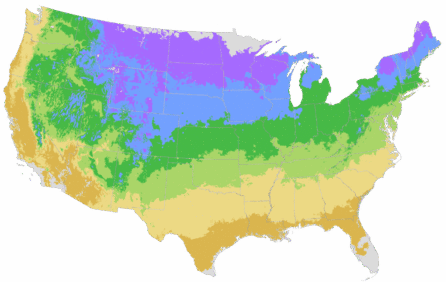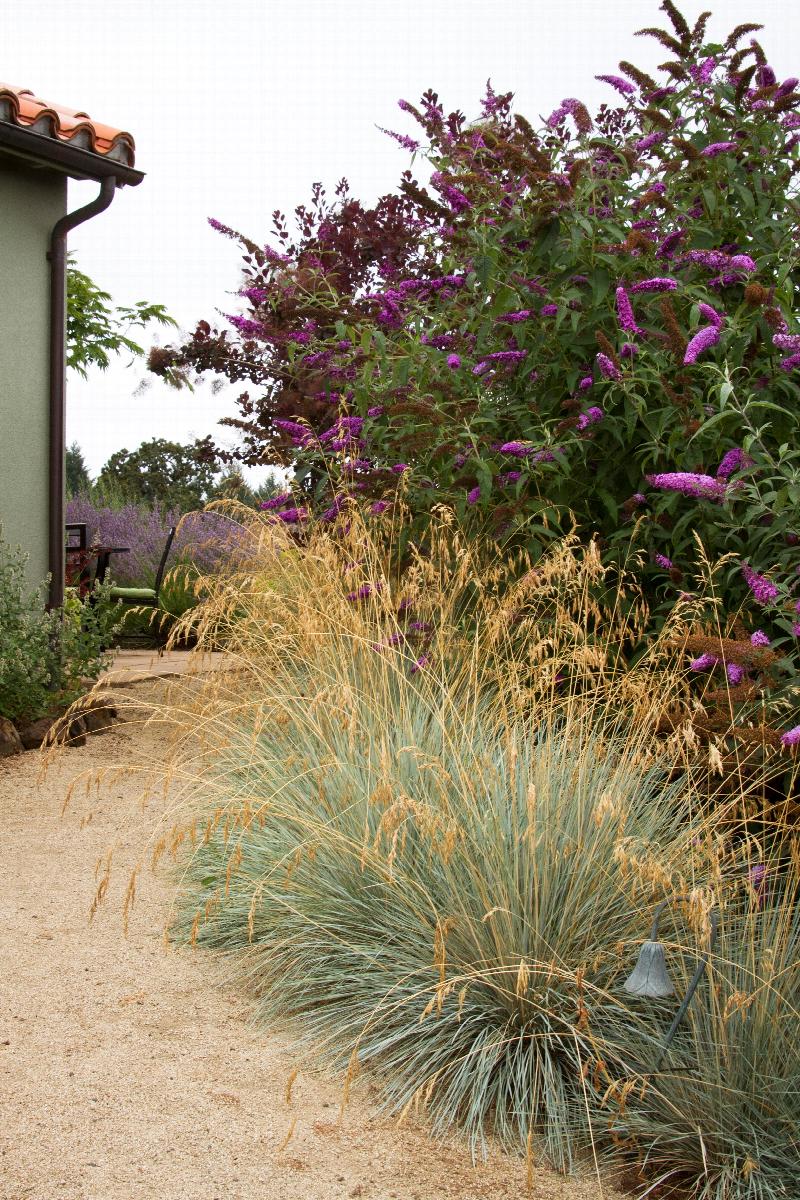Blue Oat Grass
Helictotrichon sempervirens
Pronunciation: hel-ik-toh-TREE-kon sem-per-VY-renz
SKU #03997
| Description | Graceful fountains of silver-blue blades form neat ornamental clumps that combine well with other grasses. Airy, beige to light brown, terminal panicles appear mid- to late summer. A reliable and attractive accent or specimen, perfect for rock gardens. May remain evergreen in mild winter regions. |
|---|---|
| Light | Full sun |
| Watering | Allow soil to dry slightly before watering. |
| Blooms | Summer |
| Mature Size | Moderate growing; reaches 2 to 3 ft. tall and wide. |
| Deciduous/Evergreen | Semi-Evergreen |
|---|---|
| Special Features | Dramatic Foliage Color, Easy Care, Improved Pest and Disease Resistance, Waterwise |
| Problems/Solutions | Deer Resistant, Erosion Control, Rabbit Resistant |
| Growth Rate | Moderate |
| Growth Habit | Clumping |
| Landscape Use | Border, Ground Cover |
|---|---|
| Design Ideas | Blue Oat Grass is at home in desert gardens as well as in the traditional perennial border. Plant beside landscape boulders, in rock gardens or at the edges of natural pools. Particularly beautiful planted in masses and paired with blue-gray Mediterranean plants. |
| Flower Color | Brown |
| Foliage Color | Blue-green |
| Companion Plants | Barberry (Berberis); Weigela (Weigela); Sedum (Sedum); Yucca (Yucca); Lavender (Lavandula); Ajuga (Ajuga) |
| Care | Grows easily in average, well-drained soils. Water deeply, regularly during the first growing season to establish an extensive root system. Once established, water regularly, but allow to dry out slightly between intervals for best foliage color. Drought tolerant in cool climates. Prune away old, faded foliage before new growth emerges in spring. |
|---|
This Plant's Growing Zones: 4-9

Your USDA Cold Hardiness Zone:
Your climate may be too cold for this plant
Buy Online
We cannot currently ship this product to your zip code.
Buy Locally
No Retailers found within 50 miles of your zipcode
About Us
We have been pioneers and craftsmen in the art of growing plants for nearly
100 years. Since our founding in Southern California by Harry E. Rosedale, Sr.
in 1926, we have been absolutely dedicated and obsessed with quality.
We have been pioneers and craftsmen in the art of growing plants for nearly 100 years. Since our founding in Southern California by Harry E. Rosedale, Sr. in 1926, we have been absolutely dedicated and obsessed with quality.



